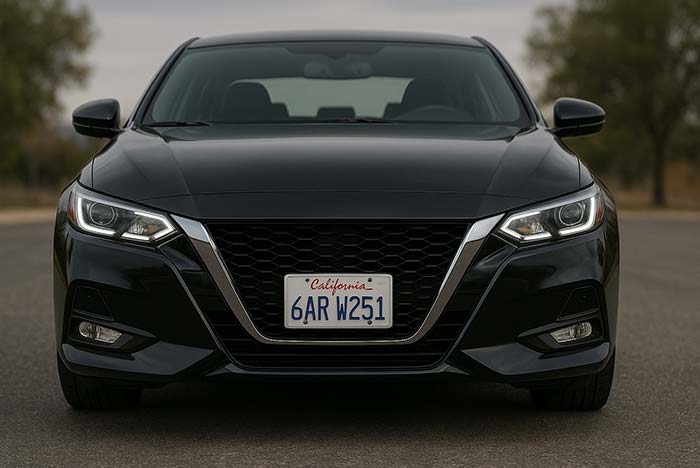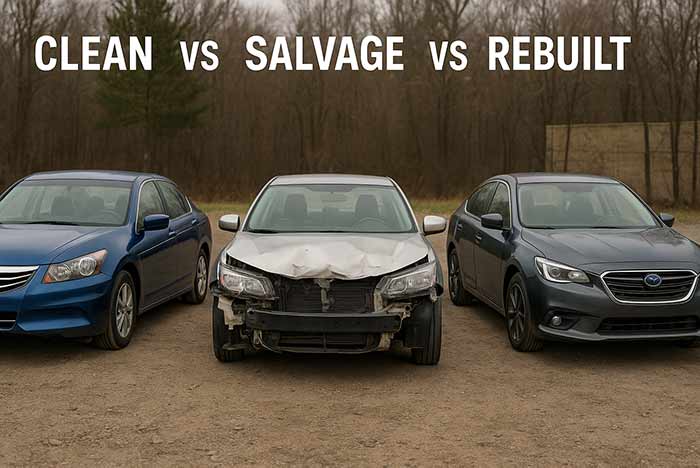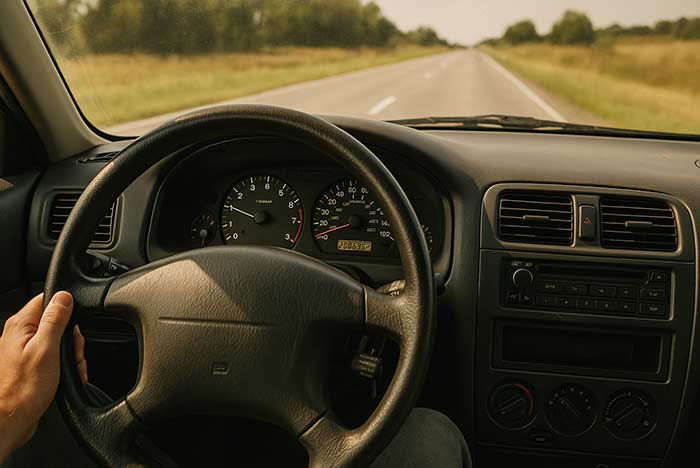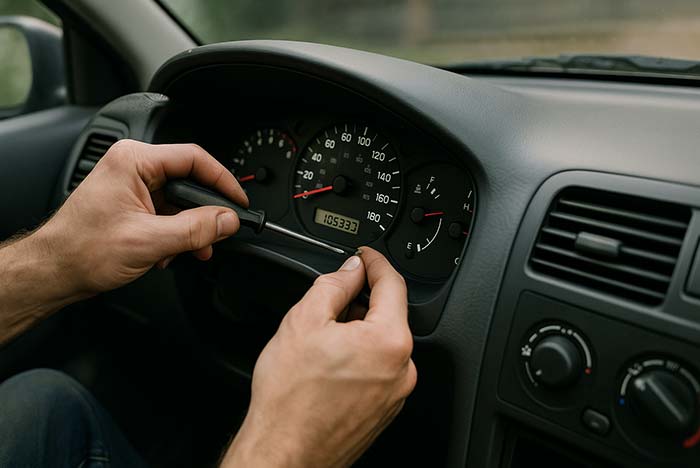
What Is a Car Title? – How to Read, Transfer & Prove Ownership
When you are planning on buying a vehicle or selling one, one of the most important documents that you will need is the vehicle title document.
A car title proves who legally owns the vehicle. Without it, you can’t transfer ownership, register the car, or sometimes even sell it. When buying form a private seller or transferring a vehicle from a family member, having and idea of how Car Title is working can save you major headaches.
We will explore how car titles work, what car titles look like, and how to read one. You’ll learn how to execute a title transformation in some special cases. For example, when the owner has died, you are giving it to a family member. We’ll also clear up the common confusion between a title and registration, and show you how to prove car ownership in tricky situations.
When buying a car from some second hand market places, in this text we’ll try to explain how to pay for a used car safely from a private seller safely.
What Is a Car Title and Why Does It Matter?
A car title is a legal document that proves the ownership of the vehicle. Not having one, selling legally will not be possible or transferring the car.
The document is usually issued by the Government Department of Motor Vehicle (DMV) or equivalent agency in every country. The title list the following details:
-
The legal owner's name
-
Vehicle Identification Number (VIN)
-
Year, make, and model
-
Lienholder, if there’s a loan on the car
-
Title status (clean, salvage, rebuilt)
This document shows that the person listed is the rightful owner. That’s why it’s the most important paper when you’re buying or selling a vehicle.
Why does it matter
If you own the car outright, the title will be in your name alone. If you're still paying off a loan, the lender usually holds the title until the balance is paid. In that case, you're the registered owner, but not the legal one—yet.
- Car titles come into play in many situations:
- Buying or selling a car
- Transferring ownership to a family member
- Settling an estate after a car owner passes away
Having the basic understanding of the car titles work will protect you from scams, delays and legal problems.
What Does a Car Title Look Like?
A car title is a state-issued document, usually printed on thick, colored paper with security features like watermarks or holograms. Its layout and appearance vary by state, but most include the same key info.
Common Elements on a Car Title:
- Owner’s Name and Address – Who legally owns the car.
- Vehicle Identification Number (VIN) – A unique 17-digit code that identifies the car.
- Make, Model, and Year – Basic vehicle specs.
- Odometer Reading – Sometimes included, especially during a transfer.
- Title Number – A state-issued ID for the document.
- Lienholder Information – If the car has a loan, the lender's name will be listed.
- Title Brand – Notes like “salvage,” “rebuilt,” or “flood” if the car has a damage history.
- Date of Issue – When the current title was created.
Visual Differences by State
Some states use blue or green borders. Others add official seals or perforated edges. But all titles are designed to prevent tampering or forgery.
Paper or Electronic?
Most states still issue paper titles, but a few now offer electronic car titles (eTitles). These are digital versions stored online by the DMV. If you’re unsure which version your state uses, check with your local DMV or title agency.
How to Read a Car Title
A car title may look official and complex, but once you know what to look for, it’s easy to read. Every section tells you something important about the vehicle’s history and who legally owns it.
Here’s how to break it down:
1. Owner Information
This section lists the legal owner’s name and address. If you’re buying a car, make sure the seller’s name matches what’s on the title. If it doesn’t—red flag. They may not have the right to sell the car.
2. Vehicle Details
Includes:
- Year, Make, and Model – Matches what’s physically in front of you.
- Body Style and Color
- Vehicle Identification Number (VIN) – Check this against the dashboard and door sticker. If it doesn’t match, don’t buy it.
3. Lienholder Section
If the car was financed, the lienholder’s name (bank or lender) appears here. That means the title is not fully in the owner's name yet. They’ll need to pay off the loan—or get a lien release—before you can legally own it.
4. Title Brands
Look for notes like:
- Salvage – Vehicle was declared a total loss by an insurance company.
- Rebuilt – A salvaged car that’s been repaired and inspected.
- Flood, Lemon, Junk, or Odometer Rollback – Each brand reveals part of the car’s past.
These brands affect resale value and insurance. Always check this box.
5. Odometer Disclosure
Some titles list the mileage at the time of sale or transfer. Make sure it matches the car’s odometer. If not, ask questions.
6. Transfer/Assignment Section
This is where the current owner signs the title over to the buyer. It usually includes:
- Seller’s signature
- Buyer’s name and address
- Sale date and price
Make sure everything is filled out neatly and accurately. Mistakes can delay your registration or require a replacement title.
How Do Car Titles Work During Ownership Changes?
Anytime a vehicle changes hands, the title has to be updated. This applies to sales, gifts, inheritance, and even transfers between family members. The process isn't hard—but it must be done right.
1. Private Sale
When you buy a car from a private seller:
- The seller signs the transfer section on the title.
- You add your name and address as the buyer.
- You take the signed title to your DMV to register the car in your name.
Some states also require a bill of sale or odometer disclosure form.
2. Transferring to a Family Member
Giving a car to a spouse, child, or sibling still requires a title transfer.
-
The current owner fills out the title just like a regular sale.
-
In many states, you can avoid sales tax on family transfers—but you still need to submit paperwork.
-
Some DMVs may ask for proof of the relationship (like a birth certificate or marriage license).
Keyword tip: That covers how to transfer a car title to a family member.
3. When the Owner Is Deceased
This one’s more complicated. You’ll need:
- The title
- A death certificate
- Proof you're the legal heir or executor
States vary, but you may need to go through probate or use a simplified transfer if the estate is small.
Some states offer a Transfer on Death (TOD) title. If that’s in place, the car goes directly to the named person without probate.
Keyword tie-in: That’s how to handle how to transfer a car title when owner is deceased.
4. Vehicles with a Lien
If the seller still owes money:
- The lienholder holds the title.
- The loan must be paid off before a clean title can be issued to the new owner.
- In some cases, the lienholder will send the title directly to the buyer or DMV after payment.
Is a Car Title and Registration the Same Thing?
No—they’re not the same. But people mix them up all the time.
Car Title = Ownership
The title proves who legally owns the car. It’s a one-time document (unless ownership changes or it's lost). If your name is on the title, you own the car.
You need it to:
- Sell or transfer the vehicle
- Prove ownership
- Handle estate or insurance claims
Think of it like the car’s birth certificate. It doesn’t expire.
Car Registration = Road Use
The registration shows the car is allowed to be driven on public roads. It’s issued by your state’s DMV and tied to:
- Your license plate
- Your proof of insurance
- Annual fees and taxes
You need to renew it every year (in most states). The DMV sends a new sticker for your plate when you do.
Why the Confusion?
Both involve the DMV. Both have your name and vehicle info. But they serve different purposes.
Can You Have One Without the Other?
- Yes—you can own a car (with a title) and not have it registered, like if it’s parked long-term.
- You can also register a car temporarily (like for a lease) even if the title is in the bank’s name due to a loan.
How to Prove Ownership of a Car
If you ever need to show that you legally own a car—during a sale, legal issue, or insurance claim—your car title is the main proof. But it’s not the only document that might help.
1. Vehicle Title
This is the top proof of ownership. If your name is listed as the owner (and there’s no active lien), the car is legally yours.
If the title shows a lienholder, like a bank or credit union, they technically own the car until the loan is paid off. In that case, you’ll need a lien release letter once it’s paid.
2. Bill of Sale
This isn’t a title, but it’s helpful. A bill of sale shows you purchased the car from another person. It should include:
-
Buyer and seller names
-
VIN
-
Date of sale
-
Purchase price
Some states require a bill of sale for private party transfers.
3. Registration Certificate
This proves the car is registered in your name, but it’s not proof of ownership by itself. It just means you’re legally allowed to drive it.
4. Loan Documents (if financed)
If you're making payments, your loan agreement shows you're the buyer. But again, the lender owns the car until it’s paid off.
5. Insurance Documents
Auto insurance policies list the insured person and vehicle info. They're useful for supporting your claim—but not strong enough alone.
What If You Lost the Title?
You’ll need to apply for a duplicate title through your DMV. Most states offer an online form, small fee, and mail delivery. Without a title, selling or proving ownership becomes very difficult.
Whether you're handling an estate, reporting a stolen car, or selling to a buyer—your title is your proof. Keep it in a safe place, and never sign it until you're ready to transfer it.
How to Pay for a Used Car from a Private Seller
Buying a car from a private seller can save you money—but it comes with more risk. There's no dealer to handle paperwork, financing, or title transfers. You're on your own.
Here’s how to do it safely and correctly.
1. Agree on a Price
- Always inspect the car first.
- Get a vehicle history report using the VIN.
- If possible, have a mechanic check it out.
Once you’re confident, settle on a fair price.
2. Choose a Safe Payment Method
Never carry large amounts of cash unless you're meeting in a public, secure place.
Better options include:
- Cashier’s check – Guaranteed by your bank. Safer for both sides.
- Bank transfer (wire or Zelle) – Fast, but confirm account details carefully.
- Escrow service – Holds the money until both parties confirm the deal is complete (extra fee involved).
Avoid:
- Personal checks
- Unverified online payment links
- “Too good to be true” prices
3. Handle the Title Properly
Make sure:
- The seller signs the title in the correct spot.
- The VIN on the title matches the car.
- Any lien on the title is released or paid off.
Ask for a bill of sale that includes:
- Date and time of sale
- Purchase amount
- Both names and signatures
- VIN and car details
This protects you if there’s a dispute later.
4. Complete the Title Transfer ASAP
Go to your DMV as soon as possible to:
- Transfer the title into your name
- Pay any taxes and fees
- Register the car
Driving a car without completing this step can lead to fines—or worse, legal trouble.


